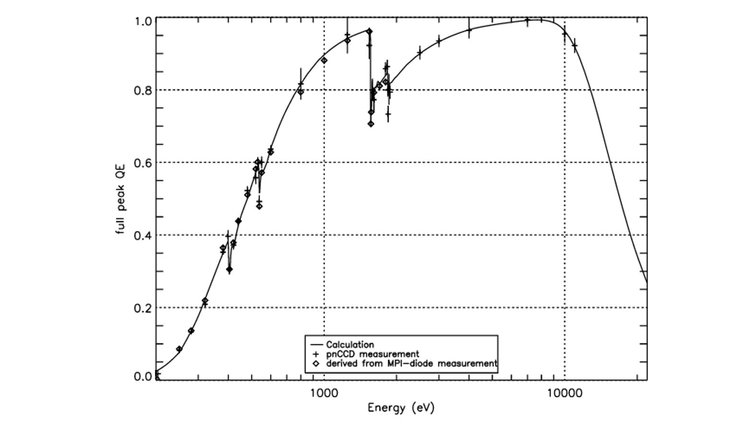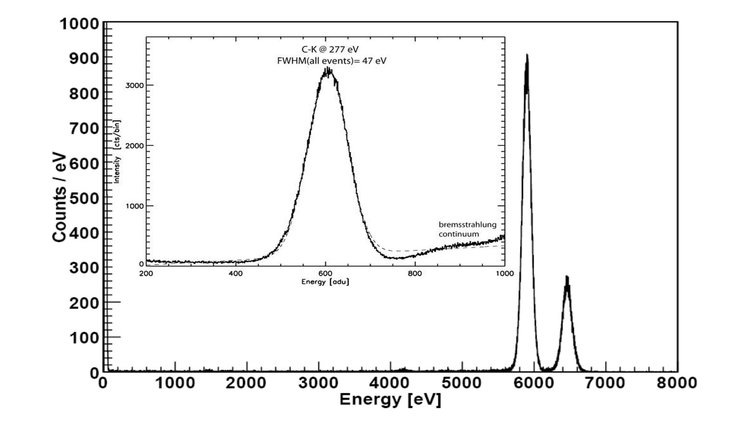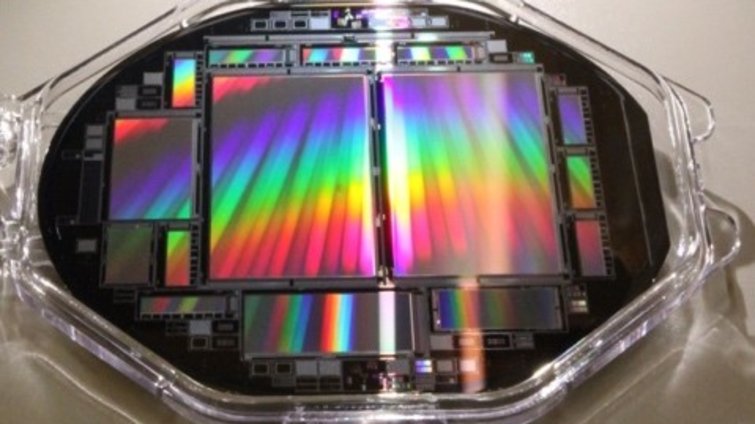MPG HLL Uniqueness
Though our technology has its origin in microelectronics our fabrication process differs substantially from microelectronics standards. Purity reasons, the demand for a fully double sided process as well as large detector surfaces are the main causes making our fabrication process neither adaptable nor directly transferable into a conventional microelectronics process unit.
Purity
The purity of the silicon we use is more than 1,000-times higher than electronic industry silicon. In consequence the cleanliness of the silicon must be maintained throughout the entire fabrication process of up to 500 individual steps. This requires an extraordinary care concerning the cleanroom itself, the fabrication tools employed in the process, the chemicals used as well as the cleaning procedures before and after every individual step.
Fully Double Sided Process
In contrary to electronics industry, we implemented of a fully double sided process, i.e. both wafer surfaces contain equally electronic structures. Correspondingly the wafer must be handled only within a small well defined rim area during the entire fabrication process. And the development of dedicated handling robots and process tools is mandatory.
Wafer Scale Devices
The size of our double sided monolithic circuits can be as large as 100 cm2. Optical inspections with data based monitoring systems are required: Every production step and wafer is scanned in detail. These inspections consume nearly half of the production time – in a typical state-of-the-art project corresponding to five of ten months total production time. Producing fully depleted, i.e. fully sensitive devices with low leakage currents in a radiation hard process is the rationale for future optimizations, not necessarily leading to smaller feature sizes.
Electronics and Sensor on a Single-Wafer
The combination of detector and electronics design on a single wafer allows the integration of signal amplification stages into the radiation sensor by either ”classic” JFETs and MOSFETs or more advanced DEPFETs. The advantage of this is a minimized readout capacitance for lower noise levels even at very high readout speeds as well as reduced sensitivity to microphony and electrical interference.
Radiation Entrance Window
The radiation entrance window is also one of the key features for the detection of low energy photons and particles. The dead layer has to be as thin as possible, but at the same time has to stand a sufficient radiation dose for a long lifetime of the detectors. The entrance window can also be tailored to optimize the transmission or suppression of certain wavelengths ranges. For detection of
optical wavelengths, antireflective coatings are formed by stacked dielectric layers of appropriate thicknesses.
Leakage Current
The leakage current of our devices is another critical parameter for photon energy measurement because its variation cannot be distinguished from the signal. Impurities in the bulk material introduced during processing are the main reasons for leakage current. MPG HLL produces devices with noise performance close to the theoretical limit.


